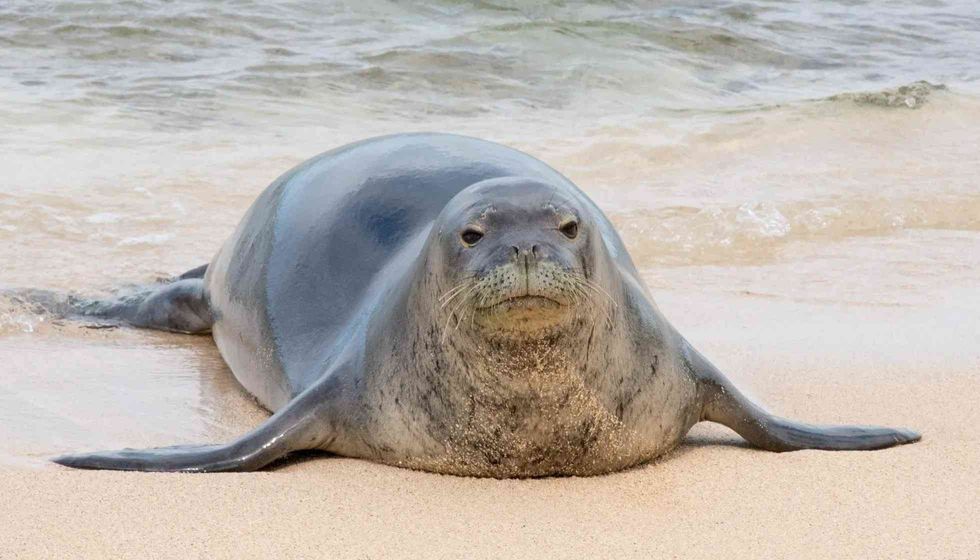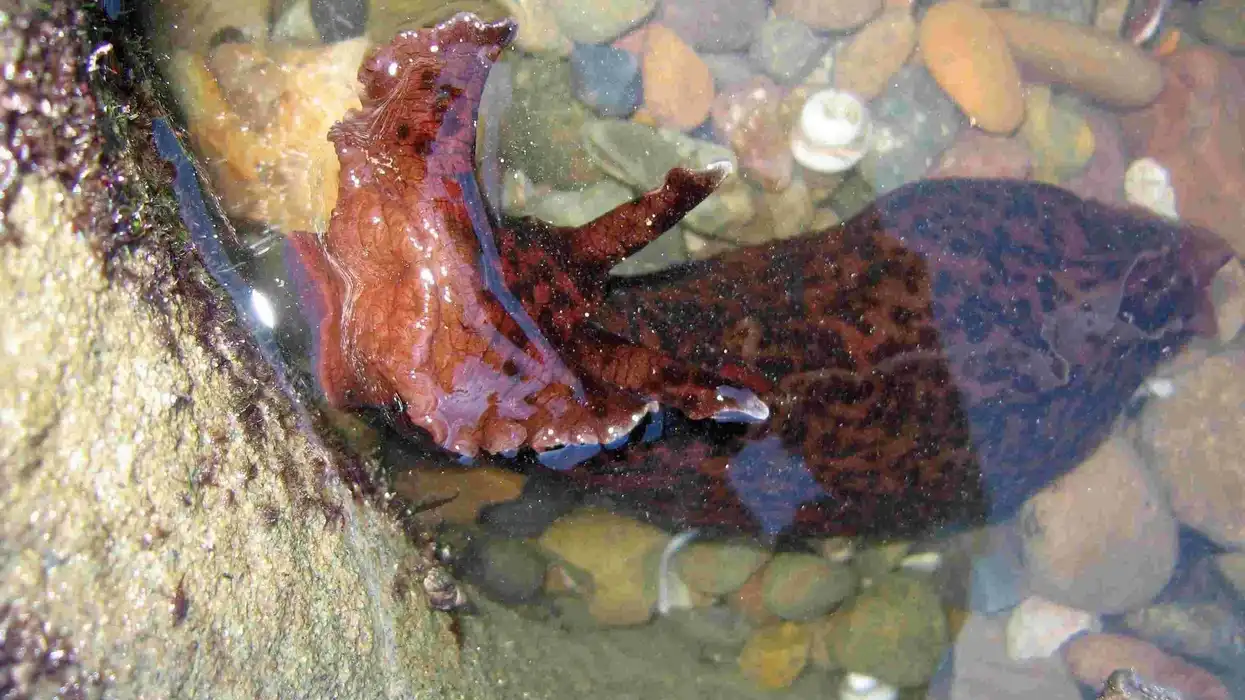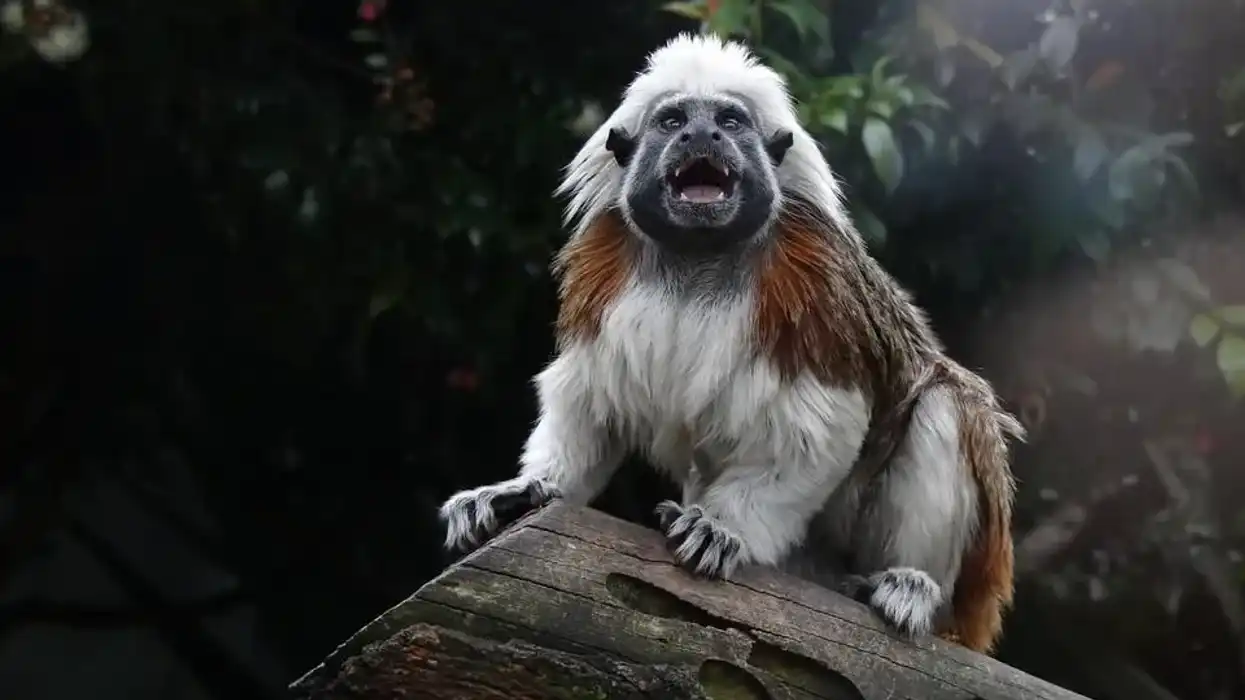The Hawaiian monk seals are an endangered species of animals, endemic to Hawaii. Over the years they have been hunted and exploited by humans.
Climate change also contributes to a key reason because of which these animals suffer habitat loss with the sea level rising drastically. Males have been observed to show aggression at certain events towards the juveniles and females.
This is another key reason for the decrease in their numbers. The Hawaiian monk seal population continues to decrease at a rate of 4% every year.
These seals are usually smaller than the other varieties of seals and have a flat head and a short snout. They feed on fish, lobster, crustaceans, and octopuses.
They like to hunt their prey hiding under the rock or sandy beach in deep waters. One of the most unique features about these animals is that they can both sleep on beach and underwater caves.
If you like this article on Hawaiian monk seals, check out our other articles on Pacific walrus and West Indian manatee.
Hawaiian Monk Seal Interesting Facts
What type of animal is a Hawaiian monk seal?
Hawaiian monk seal is a kind of seal.
What class of animal does a Hawaiian monk seal belong to?
Hawaiian monk seals belong to the class called Mammalia.
How many Hawaiian monk seals are there in the world?
Hawaiian monk seals are an Endangered species. About 1400 of them are left in the world. Among these, 1100 of the individuals live in the Northwestern Hawaiian Islands and the rest of the 300 individuals live in the main Hawaiian Islands.
Where does a Hawaiian monk seal live?
The Hawaiian monk seal spends two-thirds of the time of their time in the water of the sea. They are known to enjoy the warmth of the sub-tropical water.
They make use of water that surrounds islands and atoll and also the offshore areas on reefs and submerged banks. They are known to look for food in deep water at a depth of around 300 m and sometimes even more.
Hawaiian monk seal, Monachus schauinslandi breeds and hauls out, molts on coral reefs, sand, and volcanic rock shorelines. For pupping, they generally use sandy beaches which are protected from different sides and have shallow waters.
What is a Hawaiian monk seal's habitat?
Hawaiian monk Seal mainly lives in the Northwestern Hawaiian Islands, which ranges from Nihoa Island in Southeast to Kure Atoll in Northwest. The main islands and atolls in this region include Necker Island, Lisianski Island, Laysan Island, Hermes Reef and a few others.
A small group of its population lives in the main Hawaiian Islands.
Monk seals are found in the entire range of the Hawaiian archipelago, which is located at a distance of 1500 miles from Kure Atoll. Some of these monk seal species have been found in Johnston Atoll, in the southwest Hawaiian Islands.
Who do Hawaiian monk seal live with?
Monk seals are known to be solitary animals. They do not live in colonies like sea lions and other varieties of seals. However, it has been observed that these seals sometimes lie next to each other in small groups and rest without making any physical contact.
How long does a Hawaiian monk seal live?
Hawaiian monk seals can live up to 30 years of age. On average, they live around 20-25 years of age.
How do they reproduce?
Hawaiian monk seals mate in water. The mating season is from the month of June to August. Females reach sexual maturity at the age of four.
However, in most cases, they mate much later. They mate at the age of 5-6 in the main Hawaiian Islands and at the age of 7-10 in the Northwestern Hawaiian Islands.
The pregnancy period lasts for around nine months and the birthing process takes place in the month of March to June. The females give birth to one pup a year. Monk seal pups are of 16 lb (7 kg) and of a length of 3 ft (1 m).
What is their conservation status?
Hawaiian monk seals have been listed as Endangered in the species status by the U.S. Endangered Species Act and also by the State of Hawaii’s endangered species list.
In the year 2010, only 1100 individuals remained in this world. By the year 2016, it was observed the numbers of these individuals estimated to 1400 individuals.
The population of these seals seemed to have revived in the main islands in recent years. They have been sighted on several beaches, namely, Kauai and Maui.
In the '80s, the National Marine Fisheries Service have known to complete the Environmental Impact Statement which ensured the Northwestern Island of Hawaii as critical habitat for the monk seal population, away from human interactions.
The seals are also protected by the Marine Mammal Protection Act and Endangered Species Act. To raise more awareness, the Hawaiian monk seals have been made the official state animal of Hawaii.
Hawaiian Monk Seal Fun Facts
What do Hawaiian monk seal look like?
The local name for these monk seals is 'ilio-holo-i-ka-uaua', which has the literal meaning of dogs running in rough water. They often resemble dogs as they are even close to the family of canines.
The very reason they are called monks is because of the folds found in their neck region that resembles the hood of a monk's robe. The Hawaiian species has a grey coat and a white belly.
They do not have any external ears and have a small head with large black eyes. These mammals have a catastrophic molting every year in which they shed the old layer and new silvery skin appears.
They have vertical slits on their nostrils which close when they dive underwater. They also have eight pairs of teeth.
How cute are they?
Hawaiian monk seals look extremely adorable. Their short snout and the torpedo-shaped body adds to the cuteness factor.
How do they communicate?
The monk seals are known to produce a series of vocalizations throughout their lives. The pups utter sounds like "mwaa mwaa" or "aah". When in danger, the adults make a deep throat vocalization, called bubbling. The adults are also known to make a growling sound while ascending from the water.
How big is a Hawaiian monk seal?
Adult males are generally 7 ft (2.1 m) long while females are a little larger and are 8 ft (2.4 m) long. These monk seals are relatively smaller than the other varieties of seals.
How fast can a Hawaiian monk seal swim?
Monk seals can swim at a speed of 6.7 mph (10.8 kph). Their hind slippers make them extremely agile swimmers.
How much does a Hawaiian monk seal weigh?
Monk seal pups weigh around 16 lb (7 kg). Adult males weigh around 300-400 lb (136-181 kg) whereas females weigh around 400-600 lb (181-272 kg).
What are the male and female names of the species?
No specific names have been attributed to males and females of the species monk seal (Hawaiian).
What would you call a baby Hawaiian monk seal ?
Baby monk seals are called pups.
What do they eat?
The monk seal population feeds on fish, lobster, crustaceans, and cephalopod, like octopuses, eels. They feed on animals that are found in deep water coral beds. They usually capture the prey that hides under the sand flats or rocks.
Are they dangerous?
Monk seals are usually not very dangerous towards human beings unless they feel threatened by them. They can particularly turn aggressive if someone comes between the mother seal and the pup.
Would they make a good pet?
This variety of seals are considered endangered, hence it is illegal to keep them as pets.
Did you know...
One of the main reasons behind the decreasing number of Hawaiian monk seal population is shark predation. The Galapagos shark predation continues to grow on the pups near the shore.
Another reason is fishery interactions in which mostly the pups and the juveniles get entangled in fishing gear.
What makes the Hawaiian monk seal unique?
The seal, Hawaiian monk is seen both sleeping on sandy beaches and also underwater caves. The pups are born with a black pelage.
After the pups molt, the silvery body of their body appears. When the mother nurses its pup for about six weeks, they lose around 300 lb (136 kg) of its body weight. The Hawaiian monk seals and the Hawaiian Hoary bat are the only two surviving mammals that are only endemic to Hawaii.
Are Hawaiian monk seals aggressive?
The male monk seals have been observed to be particularly aggressive towards the females and the pups. In many instances, it has been observed that they have been seen to lethally injure several pups at a time.
Here at Kidadl, we have carefully created lots of interesting family-friendly animal facts for everyone to discover! For more relatable content, check out these mountain goat facts and Eskimo dog facts for kids.
You can even occupy yourself at home by coloring in one of our free printable Hawaiian Monk Seal coloring pages.










